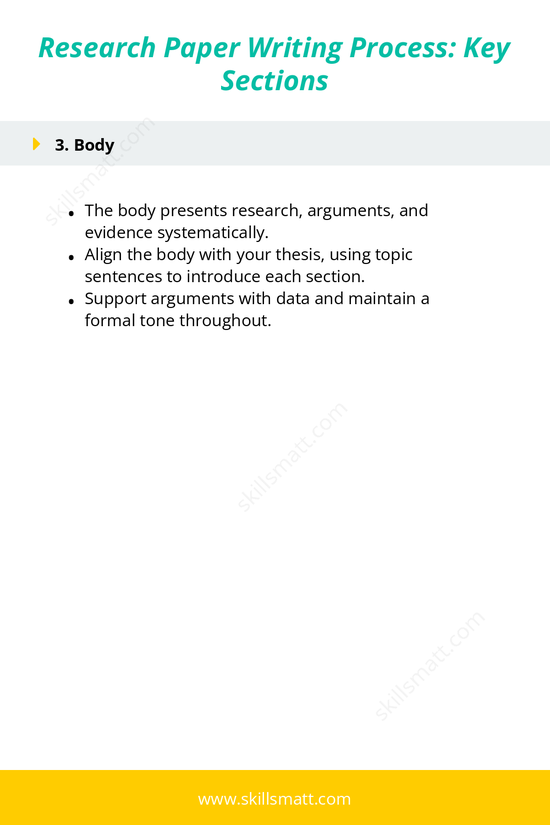Research Paper Writing Process: Key Sections
Writing a research paper involves several stages, each focusing on different sections of the paper. Understanding the key sections and their purpose will help you write a comprehensive and effective paper. Here’s a breakdown of the critical sections you need to include in your research paper.
1. Abstract
- The abstract (150-250 words) summarizes the research paper: The abstract should be a concise summary that provides an overview of your entire paper in a few paragraphs.
- It includes the problem, method, findings, and conclusions in plain language: Use simple language to explain the research problem, the methodology used to address it, key findings, and the conclusion drawn from the study.
- The abstract provides a concise preview of the entire paper: The abstract serves as a snapshot of your paper, giving the reader a brief idea of the research’s scope and findings.
2. Introduction
- The introduction establishes the context, significance, and objectives of your research: The introduction sets the stage for your research. It should describe the context, explain the significance of the study, and clarify the research questions or objectives.
- Start with an engaging opening to draw in the reader: Begin with a hook that grabs the reader’s attention. You can use a provocative question, an interesting fact, or a relevant quote.
- Provide background information on the topic and state your thesis clearly: Offer any necessary background information that helps the reader understand the context of your research. End the introduction with a clear and specific thesis statement outlining the focus of the paper.
- Discuss the broader implications of your research: Briefly mention how your research could contribute to the field or address larger questions relevant to the topic.
3. Body
- The body presents research, arguments, and evidence systematically: The body of your paper should be organized into sections that logically present your research findings, arguments, and analysis.
- Align the body with your thesis, using topic sentences to introduce each section: Ensure that each section begins with a clear topic sentence that ties back to your thesis statement. This will help keep your arguments focused.
- Support arguments with data and maintain a formal tone throughout: Provide evidence from credible sources to support your claims and ensure your writing is formal, scholarly, and free from personal opinions.
4. Conclusion
- Summarize the key points and broader significance of your findings: The conclusion should briefly summarize the main points you’ve made in your paper and highlight their broader implications.
- Avoid introducing new information in the conclusion: The conclusion is not the place to introduce new arguments or evidence. Stick to summarizing and reinforcing what you’ve already discussed.
- Emphasize the implications of your research: Conclude by discussing the potential impact of your findings, their relevance to the field, or how they might guide future research.


